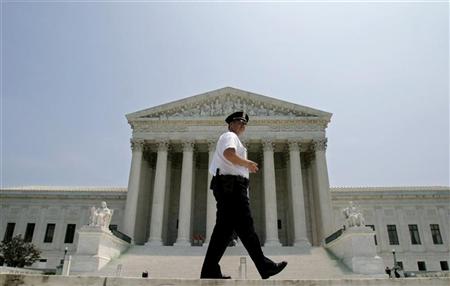
Short-term exposure to sulfur dioxide has been linked to respiratory problems. (http://www.epa.gov/air/sulfurdioxide/).
On Monday, U.S. President Barack Obama in his inauguration speech made the politically charged issue of climate change a top priority for his second term. He cited a need to protect future generations from man-made pollutants.
"The EPA's efforts to regulate greenhouse gases during Obama's first term have been upheld in court, which is a favorable sign for proponents of climate change regulation," said David Uhlmann, a University of Michigan law professor and former chief of the U.S. Department of Justice Environmental Crimes Section, in a telephone interview.
Under the Clean Air Act, the EPA is authorized to adopt standards that are necessary to protect the public health, while allowing an "adequate margin of safety."
Asarco, whose copper smelter in Hayden, Arizona, is one of the three main U.S. copper smelters, had been appealing a July decision by the Washington, D.C., Circuit Court of Appeals to uphold the EPA rule. It estimated the rule could cost companies $1.5 billion.
"The phrase 'adequate margin of safety' provides a needed buffer, given that the line where environmental harms become significant is too often very difficult to predict until after a harmful situation occurs," said Zygmunt Plater, a professor at Boston College Law School, in a telephone interview.
Leaving the D.C. Circuit ruling intact "suggests that implementation of protective regulations are not likely to be as constrained as they might have been a decade ago," he added.
EPA RULE NOT ARBITRARY
Asarco contended that the D.C. Circuit gave the EPA an effective license to set needlessly stringent environmental standards, rather than standards "not lower or higher" than necessary as it said was required under Supreme Court precedent.
But in upholding the new standard, the D.C. Circuit said it lacked jurisdiction to review the EPA's rulemaking and that the agency did not act arbitrarily or unreasonably.
Sulfur dioxide is typically the result of fossil fuel combustion at power plants and other industrial facilities. The EPA had first set sulfur dioxide standards in 1971.
The U.S. Department of Justice had urged the Supreme Court not to accept Asarco's appeal. Freeport-McMoRan Copper & Gold Inc, the world's largest publicly traded copper producer, filed a brief supporting Asarco's appeal.
Robert Steinwurtzel, a lawyer for Asarco, did not immediately respond to a request for comment. John Elwood, a lawyer for Freeport-McMoRan, declined to comment.
Uhlmann said courts are typically reluctant to get immersed in the nuts-and-bolts of environmental decision making, recognizing the EPA's greater expertise.
"The Supreme Court is far more likely to get involved when the issue is the authority to regulate," he said.
The case is Asarco LLC v. U.S. Environmental Protection Agency et al, U.S. Supreme Court, No. 12-510.

No comments:
Post a Comment